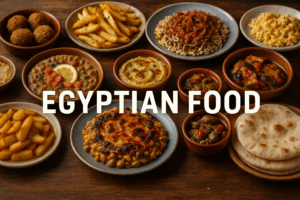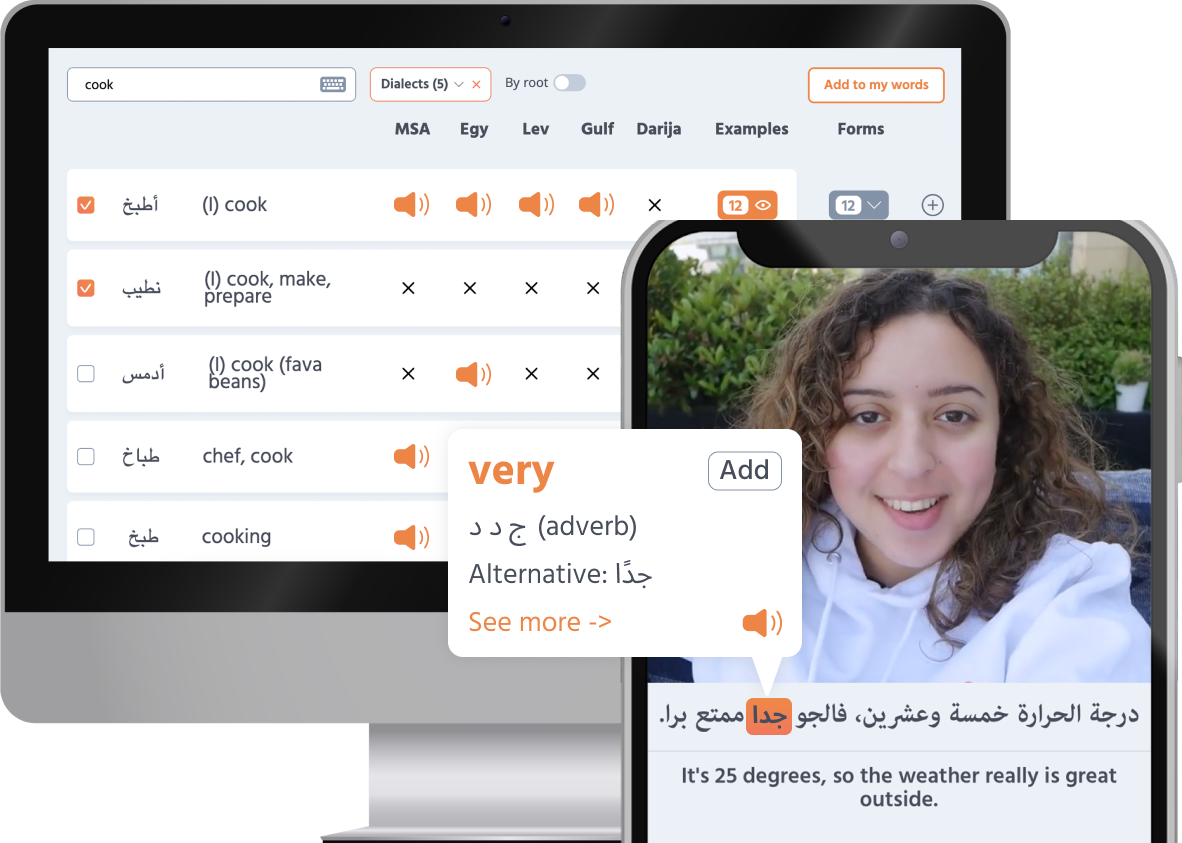Arab belly dancing, known as رقص شرقي
(Literally: “eastern dance”), is a traditional dance form that has been an integral part of Middle Eastern culture for centuries. This captivating dance is characterized by its fluid, undulating movements and intricate hip articulations, often accompanied by traditional Middle Eastern music. Belly dancing is not only a form of entertainment but also a significant cultural expression that reflects the rich history and diverse influences of the Arab world.
Common vocabulary related to Arab belly dancing Here’s some essential vocabulary, presented in Modern Standard Arabic and diverse dialects , including Levantine , Egyptian , Gulf , and Maghrebi .
English MSA Levantine Egyptian Gulf Maghrebi Dancing رقص
رقص
رقص
رقص
شطيح
Oriental شرقي
شرقي
شرقي
شرقي
شرقي
Belly dancing costumes ملابس الرقص الشرقي
بدلات رقص
بدل رقص
بدل رقص
Costume بدلة
بدلة
بدلة
بدلة
كوستيم
Belt حزام
حزام
حزام
حزام
حزام
Skirt تنورة
تنورة
جوب
تنورة
صاية
Headscarf منديل رأس
طرحة
طرحة
طرحة
سبنية
Rhythm إيقاع
إيقاع
إيقاع
إيقاع
إيقاع
Drum طبلة
طبلة
طبلة
طبلة
طبل
Tambourine دفّ
دفّ
دفّ
دفّ
دف
Music موسيقى
موسيقى
موسيقى
موسيقى
موسيقى
Oud عود
عود
عود
عود
عود
Movements حركات
حركات
حركات
حركات
حركات
Performance أداء
أداء
أداء
أداء
أداء
Female Dancer راقصة
رقاصة
رقاصة
رقاصة
شطاحة
Band فرقة
فرقة
فرقة
فرقة
فرقة
Waist خصر
خصر
وسط
خصر
نص
Hip ورك
ورك
ورك
ورك
ورك
Shaking هز
هز
هز
هز
هز
Breast صدر
صدر
صدر
صدر
صدر
Stick عصًا
عصاية
عصاية
عصا
عَوْدْ
Historical background Arab belly dancing, with its mesmerizing movements and rich cultural roots, traces its origins back to ancient times. The exact beginnings of belly dancing are shrouded in mystery, but it’s believed to have deep roots in the Middle Eastern and North African regions, weaving through the histories of Egyptian , Turkish, and Lebanese cultures.
Origins of belly dancing
Some historians suggest that belly dancing may have started as a form of fertility ritual, honoring goddesses and celebrating the cycles of life. Others point to its role in social and religious ceremonies, where dance was a medium of storytelling and spiritual expression.
Evolution through the centuries
As centuries passed, belly dancing evolved, absorbing influences from various cultures and adapting to changing social landscapes.
In Egypt, it blossomed into a more structured form known as الرقص البلدي
, a folk dance deeply embedded in everyday life and community celebrations.
During the Ottoman Empire, Turkish Oryantal dance added a layer of sophistication and elaborate costuming, further enriching the dance form.
The 19th and early 20th centuries marked a significant turning point, as belly dancing began to gain international recognition. This era saw the birth of the glamorous, performance-oriented style known as رقص شرقي
or “Oriental Dance,” which combined traditional elements with Western theatrical flair.
Today, belly dancing continues to evolve, blending traditional techniques with contemporary influences.
Cultural significance Arab belly dancing holds a profound place within Middle Eastern culture , embodying a rich tapestry of history, tradition, and social expression.
Its significance extends far beyond mere entertainment, intertwining with various aspects of cultural identity and communal life.
Symbolism and meanings in Arab societies
Historically, belly dancing has been associated with fertility and femininity, often performed during ceremonies that celebrate life and womanhood, such as weddings and childbirth. The dance movements, particularly the undulating hips and flowing arms, are believed to represent the cycles of life and nature, embodying a connection to the earth and the divine feminine.
Role in traditional celebrations and ceremonies
Belly dancing plays a pivotal role in traditional celebrations and ceremonies across the Middle East. It’s a staple of joyous occasions like weddings, where it serves as a symbol of happiness, prosperity, and the celebratory spirit of the event. The dance is also part of religious festivals and harvest celebrations.
Representation in arts and media
The representation of belly dancing in arts and media has contributed significantly to its cultural significance. In literature, film, and visual arts, belly dancing is often depicted as a symbol of Middle Eastern heritage and exotic allure. Egyptian cinema, in particular, has played a crucial role in popularizing belly dancing, with iconic dancers like Samia Gamal and Tahia Carioca becoming cultural icons.
Styles and techniques of Arab belly dancing Arab belly dancing is a rich and diverse art form with various styles and techniques that have evolved across different regions. Each style brings its own unique flavor, reflecting the cultural and historical influences of the area it originates from.
Regional variations
Egyptian raqs sharqi: Characterized by fluid, graceful movements, intricate hip articulations, and emotive expression. This style often includes elements of ballet and modern dance, making it both elegant and theatrical. Egyptian dancers are known for their slow, deliberate movements.Turkish oryantal: Known for its energetic and lively movements. Dancers employ more pronounced shimmies, fast spins, and acrobatic elements. Turkish belly dancing often incorporates the use of finger cymbals (zills) and features bold, assertive gestures. Turkish costumes are more ornate, with frequent use of side slits to enhance mobility.Lebanese belly dance: A fusion of traditional and contemporary movements, distinguished by its emphasis on powerful hip movements, chest isolations, and expressive storytelling. Lebanese dancers often incorporate floor work and backbends, adding a dramatic flair to their performances. The music accompanying Lebanese dance is more dynamic.
Don’t miss the chance to explore the Lebanese and Egyptian dialects on Playaling.
Stuart Bassil from Norwich, England , CC BY 2.0 , via Wikimedia CommonsKey movements and techniques
Hip movements: Central to belly dancing, encompassing a wide range of techniques such as shimmies, drops, lifts, and figure eights.Arm and hand gestures: Play a crucial role in framing the body and enhancing the storytelling aspect of the dance.Use of props: Common props include veils, canes, finger cymbals (zills), and swords, adding variety and visual interest to the performance.
Music and instruments used in belly dancing Music is the heartbeat of belly dancing, providing the rhythm and mood that guide the dancer’s movements. Traditional Middle Eastern music features a rich tapestry of sounds created by a variety of instruments.
Traditional Middle Eastern instruments
Darbuka (doumbek): A goblet-shaped drum that produces a range of sounds from deep bass to sharp treble, essential for creating the complex rhythms of belly dance.Oud: A pear-shaped string instrument similar to a lute, providing melodic and harmonic accompaniment.Qanun: A zither-like instrument that adds a distinctive, resonant sound to the music.Nay: A reed flute that contributes soulful, breathy melodies.Riq: A type of tambourine used to add percussive accents and enhance the rhythm.
Musical improvisation – taksim
An essential aspect of belly dance music is the practice of musical improvisation, known as “Taksim.” This typically involves a solo performance by instruments such as the Oud, Nay, or accordion, often accompanied by a percussion instrument. During Taksim, the musician improvises, showcasing their talent and creativity, while the dancer responds with expressive and emotional movements.
Variations in rhythm and accompaniment
Egyptian music is characterized by its classical and structured nature. The rhythms are often complex and richly layered.Turkish and Lebanese music: Similar instruments are used, but the rhythms and musical phrasing can differ. Turkish music tends to be fast-paced and energetic, while Lebanese music is dynamic and varied.
Modern influences and fusion styles
In contemporary belly dancing, music often incorporates modern influences and fusion styles. Dancers may perform to electronic music, pop, or world music that blends traditional Middle Eastern sounds with global genres. This fusion creates fresh, innovative performances.
Fusion music: Combines elements of traditional Middle Eastern music with genres like jazz, hip-hop, and electronic dance music (EDM).Live performances: Many dancers prefer performing to live music, allowing for a dynamic interaction between the musician and dancer.
In conclusion, the music of Arab belly dancing is integral to its allure and cultural significance. Traditional instruments, improvisational elements like Taksim, regional variations in rhythm and accompaniment, and modern fusion styles all contribute to the rich and diverse musical landscape that enhances the dance’s expressive movements.
Modern influence and global spread The enchanting art of Arab belly dancing has transcended cultural and geographical boundaries, captivating audiences and practitioners worldwide. Its global spread has led to the development of contemporary adaptations and fusion styles, making belly dancing a dynamic and evolving art form.
Arab belly dancing in the Western World
Belly dancing gained significant popularity in the Western world during the late 19th and early 20th centuries, thanks to the fascination of Western explorers and artists with Middle Eastern culture. The 1893 Chicago World’s Fair played a crucial role in introducing belly dancing to a broader audience. In the decades that followed, belly dancing became a popular entertainment form in nightclubs, theaters, and cabarets across Europe and North America.
Contemporary adaptations and fusion styles
Modern belly dancing has evolved to include various contemporary adaptations and fusion styles, blending traditional techniques with influences from other dance genres.
Tribal fusion: Combines elements of traditional belly dance with influences from tribal and folk dances, as well as contemporary dance forms like hip-hop and modern dance.Belly dance fitness: Focuses on the physical fitness aspects of belly dancing, incorporating it into workout routines.Belly dance theater: Integrates belly dancing with theatrical elements, creating narrative-driven performances that tell stories through dance.
Male belly dancers: Breaking stereotypes and celebrating art Male belly dancers are gradually making a name for themselves, challenging traditional gender norms and adding their unique styles to this ancient art form. While belly dancing has mainly been seen as a women’s dance, men have been part of this tradition for centuries, especially in places like Turkey, Egypt, and Lebanon.
In Turkey, male belly dancers, known as “zennies,” have been around for a long time. During the Ottoman Empire, it was common for young male dancers to perform at gatherings, especially when women weren’t present. These dancers entertained people with their intricate moves, flashy costumes, and dramatic performances.
Today, male belly dancers continue to evolve this dance style. Performers like Tito Seif from Egypt and Serkan Tutar from Turkey have become famous worldwide, showing off their skills in workshops, competitions, and festivals. They not only bring technical expertise but also highlight the athleticism and expressive power of belly dancing.
Even though they contribute a lot to the art, male belly dancers often face social stigma and prejudice. Many people still see belly dancing as a feminine activity, so male dancers can encounter resistance and misunderstanding. This stigma is deeply rooted in cultural and gender norms, making it tough for male dancers to gain acceptance and respect. However, as people become more open to different expressions of art and culture, perceptions are slowly changing.
Influence of social media and online platforms The digital age has significantly impacted the spread and evolution of belly dancing. Social media platforms, online tutorials, and virtual classes have made belly dancing accessible to a global audience.
In conclusion, the modern influence and global spread of belly dancing have transformed it into a dynamic and evolving art form. From its introduction to the Western world to contemporary adaptations and the impact of social media, belly dancing continues to captivate and inspire.
Taboos and perceptions of impropriety in belly dancing Despite its cultural richness, Arab belly dancing has faced significant scrutiny and stigmatization due to various cultural, religious, and social factors.
Cultural and religious sensitivities
In many Middle Eastern societies, norms around modesty clash with the revealing costumes and sensual movements of belly dancing, often viewed as provocative and inappropriate, particularly in conservative communities. Historically linked to entertainment venues like nightclubs, belly dancing can carry negative connotations, leading to perceptions of it being morally lax rather than a respected cultural art form.
An Egyptian belly dance costume designer opens up about her craft and the social stigma associated with it. Interested in learning Arabic through real world videos and interactive captioning? Visit Playaling for your free trial. Social stigma and stereotyping
When introduced to Western audiences, belly dancing was often sexualized and exoticized, reinforcing stereotypes and overshadowing its cultural significance. Predominantly performed by women, belly dancing can challenge traditional gender roles in patriarchal societies, leading to further stigmatization.
Internal community critiques
Professional dancers often face more scrutiny and judgment compared to hobbyists, both from within their communities and from outsiders. Some purists criticize the commercialization of belly dancing, fearing it dilutes its cultural authenticity, especially with the rise of fitness classes and fusion styles.
Efforts to combat taboos and misconceptions Workshops, lectures, and cultural festivals aim to educate the public about the history, significance, and artistry of belly dancing. Prominent dancers use their platforms to challenge stereotypes, promote understanding, and highlight the empowering aspects of belly dancing. Emphasizing respect for the dance’s cultural origins while supporting contemporary expressions helps shift negative perceptions.
Benefits of belly dancing Belly dancing offers numerous physical, mental, and emotional benefits. This multifaceted dance provides a holistic approach to well-being, enhancing fitness, boosting confidence, and promoting mindfulness.
Physical health benefits
Fitness and flexibility: Belly dancing is a full-body workout that engages various muscle groups, helping improve overall fitness and flexibility.Posture and core strength: Emphasis on isolating different parts of the body helps develop core strength and improve posture.Cardiovascular health: Belly dancing can be an effective cardiovascular workout, especially during faster-paced routines.
Mental and emotional benefits
Confidence and self-expression: Encourages self-expression and creativity, boosting confidence.Stress relief and mindfulness: The rhythmic movements and focus required in belly dancing promote relaxation and mindfulness.Cultural appreciation and connection: Provides an opportunity to connect with and appreciate Middle Eastern culture.
In summary, the benefits of belly dancing extend beyond the physical to encompass mental and emotional well-being.
Learning and practicing belly dancing Belly dancing is a rewarding and enriching pursuit, offering both a creative outlet and a means of improving physical fitness. Whether you’re a beginner or looking to deepen your skills, there are numerous ways to learn and practice this captivating dance form.
Finding classes and instructors
Local dance studios: Offer in-person instruction and build a community of supportive dancers.Cultural centers and community colleges: Provide structured learning environments.Professional instructors: Offer private lessons tailored to individual learning pace and goals.
Online resources and tutorials
YouTube channels: Provide free tutorials ranging from basic techniques to advanced choreography.Online courses: Offer comprehensive courses with detailed lessons and feedback options.Social media: Platforms like Instagram and TikTok feature short tutorials, tips, and inspiration.
Tips for beginners
Start with the basics: Focus on mastering basic movements before moving on to more complex techniques.Consistent practice: Regular practice helps build muscle memory and improve technique.Warm-up and cool down: Prevents injury and aids in recovery.Use a mirror: Helps observe and correct posture and movements.Be patient and have fun: Celebrate progress and enjoy the process.
In conclusion, learning and practicing belly dancing is accessible to everyone, whether through local classes, online resources, or self-guided practice.
Additional resources For those interested in delving deeper into the world of belly dancing, here are some recommended resources:
Recommended reading and documentaries
Books:
“Serpent of the Nile: Women and Dance in the Arab World” by Wendy Buonaventura
“Grandmother’s Secrets: The Ancient Rituals and Healing Power of Belly Dancing” by Rosina-Fawzia Al-Rawi
Documentaries:
“American Bellydancer” (2005)
“Journey of a Belly Dancer” (2008)
Notable performers and influencers
Samia Gamal: An iconic Egyptian dancer known for her graceful style.Tahia Carioca: Celebrated for her dynamic performances.Rachel Brice: Renowned for her Tribal Fusion style.
Websites and online communities for enthusiasts
Bellydance.com :Shira.net :Bellydanceforums.net :
By exploring these resources, you can deepen your understanding of belly dancing and connect with the community.
Oh, and by the way… If learning Arabic at your own pace, with fun, real-world videos sounds like your style, then Playaling could be exactly what you’re looking for!
With Playaling, you’ll dive into any major Arabic dialect or MSA. Our diverse range of videos has it all—from everyday conversations and cultural moments to music videos, TV and movie clips, influencer content, news broadcasts, and inspiring talks.
Our interactive captions let you tap any word for instant translations, context, and audio. So, real Arabic content becomes accessible with just a click. Miss something? No problem—rewind and listen as often as you need, or hover over subtitles for quick definitions.
Spot a word you want to learn? Save it to your personalized word set, or dive into curated sets for focused practice and easy review.
Interactive exercises let you dive in and practice what you’ve learned.
Need to look something up? The Audio Dictionary has you covered with clear human pronunciations and real world examples.
It’s a learning experience that keeps you engaged, bringing authentic, real-world Arabic closer to you every step of the way.
Give it a try!









